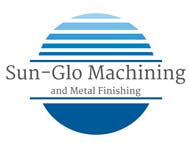What is Anodizing?
Anodizing is an electrolytic passivation process that is used to increase the thickness of the natural oxide layer found on the surface of metal. It increases the metal’s durability and resistance to corrosion, and it provides a better surface for paint primers, coloring, and glues to adhere to than untreated metal does. Anodic films can be used for many cosmetic purposes, either with thick porous coatings that can absorb dyes, or with thin transparent coatings that add effects when exposed to light. Because what you choose to anodize will determine how you anodize, it’s important to consult with a Type II Anodizing Expert to ensure you have all the facts you need.
What is Type II Anodizing?
Type II anodizing is the most common method used for anodizing, and it is used in a variety of fields. It provides protection to metal surfaces because the anodized metal is resistant to abrasion. It’s used in a variety of fields and areas: military applications, sporting goods, airplane and other mechanical parts, optical components, and even computer enclosures. Not sure which method to use yet? Your best bet is to talk to a Type II anodizing expert to get all of the facts.
Lower Costs, Save Time
Type II Anodizing is a very popular method of anodizing because it features a lot of benefits. It’s a quick way to achieve thickness, ensuring the metal is protected against abrasions, corrosion, and general use. It also consumes less energy to produce than other anodizing methods, and according to the Type II Anodizing experts, it reduces the end-product cost over all.
Type II Anodizing is also the best method to use if the metal is going to be finished or colored. Both a shiny and a matte finish can be achieved through the Type II anodizing method. It’s the method most commonly used for parts as well. It’s used when coloring and decorative purposes are important, as well as when you are asking the Type II Anodizing experts to set you up with hardness and resistance to abrasion and corrosion.
For General Use
Most people don’t think about Type II Anodizing, but they encounter it in almost every aspect of their lives, from the items they use to the machines they encounter. Anodized metal is everywhere, and it’s important to use the right anodizing method for the right use. Type II anodizing is Sulfuric acid, and it’s the method most commonly used for general applications. Unlike Chromic acid anodizing (Type I anodizing), Type II will create a harder, thicker surface. Type I Anodizing is generally used for parts that need a lot of flexibility or that undergo a lot of stress. For general anodizing purposes, Type II anodizing is the best method for general use, as any Type II Anodizing expert will attest to.
Better for the environment
Unlike chromic acid, which is toxic and has special waste-disposal needs, Type II anodizing has less waste production. That makes it a better choice for general anodizing purposes; it’s more convenient and more environmentally friendly to use. Use Type II anodizing to create hard, long-lasting, and durable metals, and talk to at Type II Anodizing expert to help get the job done right.
Sun-Glo Machining and Metal Finishing
quotes@sun-glo.com
800-741-1456
